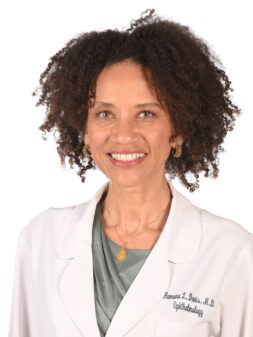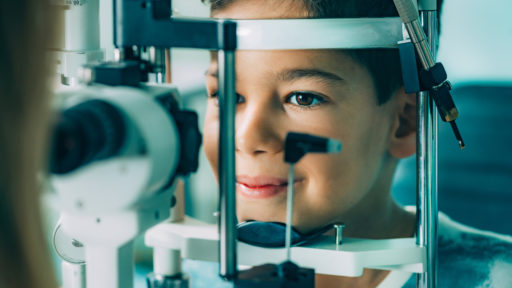What is a blocked tear duct?
This condition is called dacryostenosis or congenital (present at birth) lacrimal duct obstruction. Tears help clean and lubricate the eye and are produced in the lacrimal gland located under the bone of the eyebrow. Tears from the lacrimal gland go into the eye through tiny ducts along the eyelid. Tears drain through two small openings at the inner corner of the eyelids, then drain into a larger passage from the eye to the inside of the nose, called the nasolacrimal (tear) duct.
In some babies, the openings into the nasolacrimal duct have not formed properly. This causes a blockage and the tears have no place to drain. A blocked tear duct can occur in one or both eyes. The blockage may be present at all times, or it may come and go.
What are the symptoms of a blocked tear duct?
Because infants do not produce tears until they are several weeks old, a blocked tear duct may not be noticed at birth. The following are the most common symptoms of a blocked tear duct. However, each child may experience symptoms differently. Symptoms may include:
- Tears pooling in the corner of your baby’s eye
- Tears draining down your baby’s eyelid and cheek
- Mucus or yellowish discharge in the eye
- Reddening of the skin from rubbing
A blocked tear duct may be noticeable only when a baby cries, or in cold or windy weather when tears are stimulated. The symptoms of a blocked tear duct may resemble other conditions or medical problems. Always consult your child’s health care provider for a diagnosis.
How is a blocked tear duct diagnosed?
A blocked tear duct is usually diagnosed based on a complete medical history and a physical examination of your child. Additional tests may be required to confirm the diagnosis.
Treatment for a blocked tear duct
Specific treatment for a blocked tear duct will be determined by your child’s health care provider based on:
- Your child’s age, overall health, and medical history
- The extent of the condition
- Your child’s tolerance for specific medications, procedures, or therapies
- Expectations for the course of the condition
- Your opinion or preference
The most common treatment for a blocked tear duct is gently “milking” or massaging the nasolacrimal duct two to three times a day. Your child’s health care provider will show you how to do this. If there are symptoms of infection, antibiotics, especially for use in the eye, may be used. Fortunately, the majority of blocked tear ducts heal on their own and usually by the time the child is 1 year old. If the duct remains blocked after this time, the duct opening can be enlarged with a small probe. This may need to be repeated, but this procedure is effective in most cases. Surgery may be an option after all other treatments have been tried.



